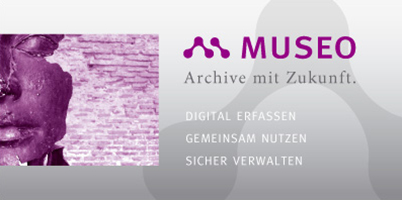
Capture digitally, share, manage securely
Museums are the custodians of natural and cultural heritage. The foundations of their work are collecting, preserving, researching, exhibiting and mediating. In today's world, the focus is increasingly on leisure, tourism and the promotion of cultural identity. In the future, these demands can only be met with the help of new strategies, modern technology and functioning networks. The possibility of digitally archiving and managing exhibits and inventory and making them synergetically usable is the basis for all museum work.
museum-digital helps to create this basis.
museum-digital is an initiative of museums. The initiative has existed since 2009 and was born out of an attempt to develop the simplest possible way to put information about museums and the objects they hold online. The original 6 participating museums have now grown to more than 600, and the goals have long since expanded. The simple publication in a database has been extended by other forms of presentation, but above all, good inventorying has also become a central goal. At museum-digital we jointly develop software with the aim of making inventorying and putting things online not only easy, but every quality recording a pleasure.
Interface for museum-digital is the internet. The browser-based software manages the data of all users on a central server - eliminating the need for installation routines. Archiving is possible at any location that has access to the internet. Specially built-in security and encryption protect the stored data. This effectively protects all entries from external and internal attacks and access violations.
With museum-digital users can archive their data digitally and centrally, whereby any number of locations can be networked. Through special security levels, each location can decide for itself which of its data should also be made accessible to others or be specially protected. Subsequent use by other institutions and companies is possible. The central digital storage takes into account modern technical standards and multilingualism. Obsolete and thus no longer readable data are a thing of the past. All openly presented data can be accessed by interested parties via an internet platform. Museum institutions can thus be found quickly and easily on the basis of their data records, an exchange is made possible and the level of awareness is increased.
